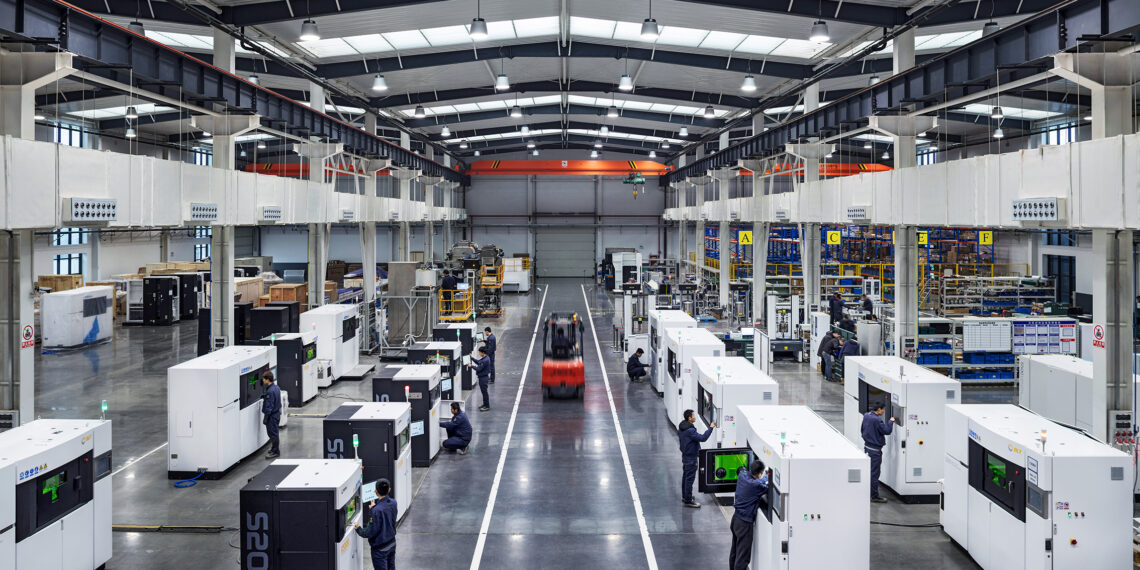It was only a matter of time before the automotive industry embraced 3D printing. With the production of 3D designs becoming more accessible and affordable, designers are now able to create fully functional prototypes faster than ever before. This is opening up exciting new opportunities for car manufacturers, suppliers and service providers across the entire supply chain.
It means they can respond more quickly to changes in the market and launch new products at a lower cost than ever before. This is a major driver behind the sector’s rapid expansion in recent years. The top ten industries that will benefit most from 3END3D printing over the next five years are listed below:
Aerospace and Defence
With demand for aerospace and defence goods expected to rise 3.2% per year, 3D printing will be vital for the production of large, complex components, including aircraft parts and components, drones, and radar-based sensors. Aerospace and defence industries are expected to be the most applicable to 3D printing.
For instance, 3D printing could provide benefits in the production of rotor blades, where a complex shape is required and would otherwise be unfeasible to make using conventional methods. 3D printing could also help increase production volumes in the aeronautical and defence industries by using it to produce components like rivets and fixtures.
Construction Industry
Construction has traditionally been a difficult industry to transform with respect to 3D printing. However, with the growing accessibility of technology, it is now a great candidate for transition. Manufacturers and suppliers in the industry can now use 3D printing to produce prototypes of building components like pipes, structural walls, and structural beams.
This can allow them to produce smaller quantities more quickly and reduce the impact of existing and new construction regulations, thereby improving the process. Moreover, with the growing demand for construction 3D printing, it is now possible to consume more materials than ever before, thereby lowering the costs for customers.
Consumer Electronics
The use of 3D printing in the electronics sector is growing at a rapid rate, especially in the consumer electronics segment. This is largely due to its cost advantages over traditional manufacturing techniques. For instance, by using 3D printing, electronics manufacturers are not only able to create customised products, but also reduce manufacturing lead times.
This can help them respond to changing demand patterns more quickly, which can positively affect their business across the entire value chain. It can also provide cost savings by eliminating the need for inventory or excessive warehousing. However, one drawback of 3D printing with electronics is the fact that they are mostly made of plastic, which is not durable enough.
Health Care
With its growing shift towards personalized medicine, health care is one of the most attractive industries for 3D printing. The sector is expected to benefit from 3D printing by using it to produce customised implants, orthotics, and prosthetics.
It can also allow manufacturers to produce implants and orthotics at a lower cost as there is a significant reduction in the need for manual labour compared with manufacturing using traditional methods. The growing availability of 3D printing in the healthcare sector can also help address the growing demand for customized treatments, medical devices, implants, and orthotics.
Manufacturing Sector
In addition to improving the quality of products, 3D printing can also help reduce production costs. It significantly reduces labour costs in comparison with traditional manufacturing methods, thereby providing manufacturers with cost advantages. The sector is expected to benefit from cheaper 3D printing technologies in the future.
The sector is likely to see rapid growth, particularly in the production of aerospace and aerostructures, automotive, and healthcare industries. It can help companies in these sectors improve their production rates, reduce costs, and reach new markets. For instance, a car manufacturer can reduce costs by using 3D printing to produce components like seats and steering wheels.
Material Handling and Warehousing
As the demand for products in the material handling and warehousing sector grows, so does the demand for 3D printing. This can fill the gap left by additive manufacturing in the chain and create opportunities for suppliers. In fact, large warehouse operators may implement 3D printing to reduce the cost of their operations and meet the growing demand for freight transportation.
In addition to this, 3D printing can also help improve inventory management, thereby helping companies manage their inventories more efficiently. Operators can use 3D printing to reduce the impact of the ever-growing demand for freight transportation by producing components that can be used in the logistics sector.
Oil and Gas Sector
The oil and gas sector is likely to be the top industry for the growth of 3D printing. In fact, demand for additive manufacturing in this sector is expected to grow by 31% per year, outpacing demand for metals, mining, and petrochemical industries.
This can help oil and gas companies improve their production rates, reduce costs, and reach new markets. The sector is expected to benefit from 3D printing to produce drill pipes, valves, and tools for hydrocarbon production. It can also help operators use 3D printing to reduce the impact of the ever-growing demand for transportation and logistics.
Retail Industry
The retail industry is one of the fastest-growing sectors for 3D printing, and it can help retailers produce custom displays, furniture, and fixtures in-house. In fact, the sector is expected to grow by 2.6% per year. It can also allow retailers to produce products like mannequins and fixtures at lower costs and improve inventory management.
The industry can benefit from 3D printing by using it to produce products like furniture, mannequins, and fixtures. The retail industry can use 3D printing to create custom displays, furniture, and fixtures, thereby reducing the impact of rising investments in the medium. 3D printing can also help operators manage their inventories more efficiently, thereby reducing the overall cost of operations.





